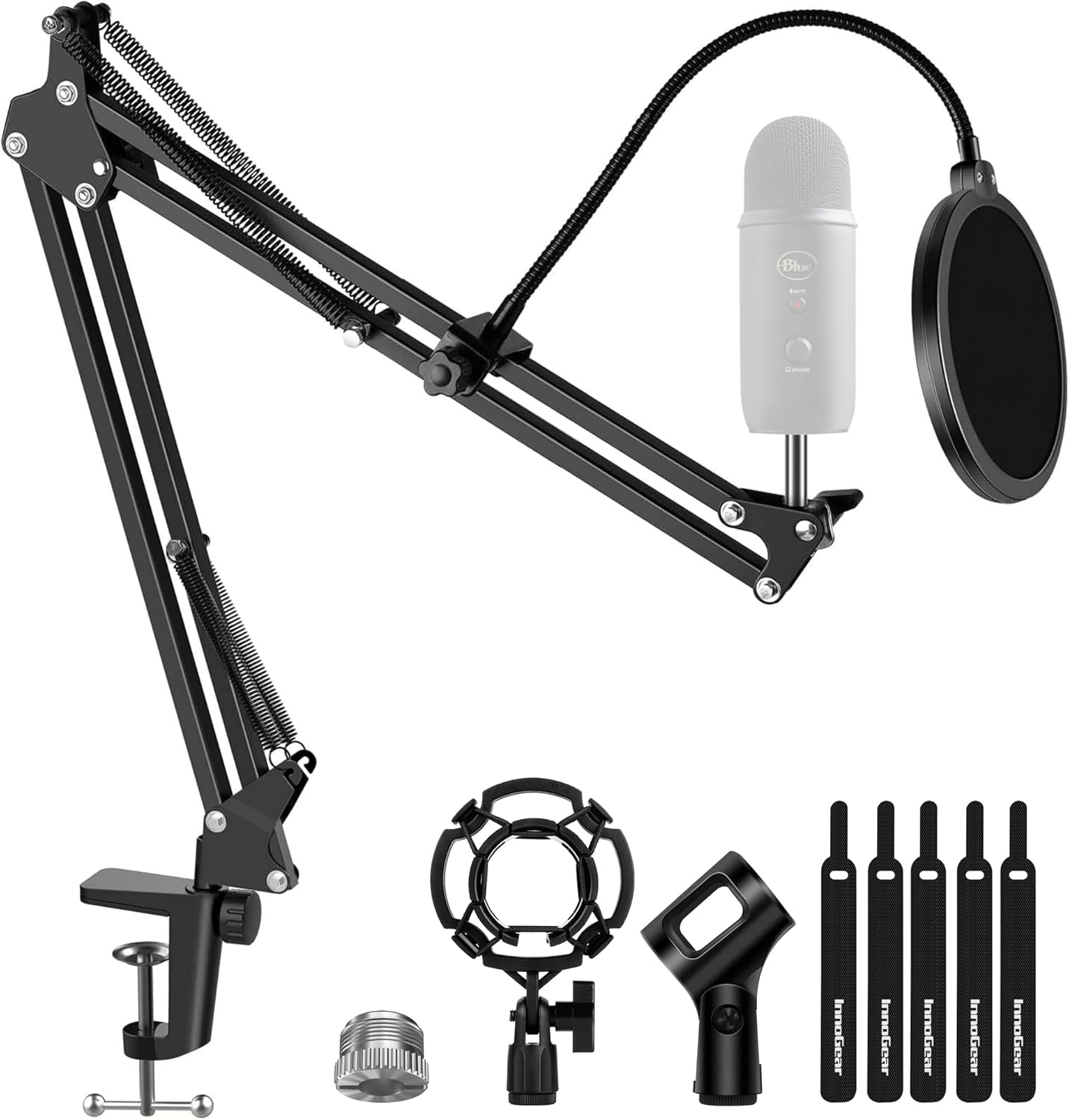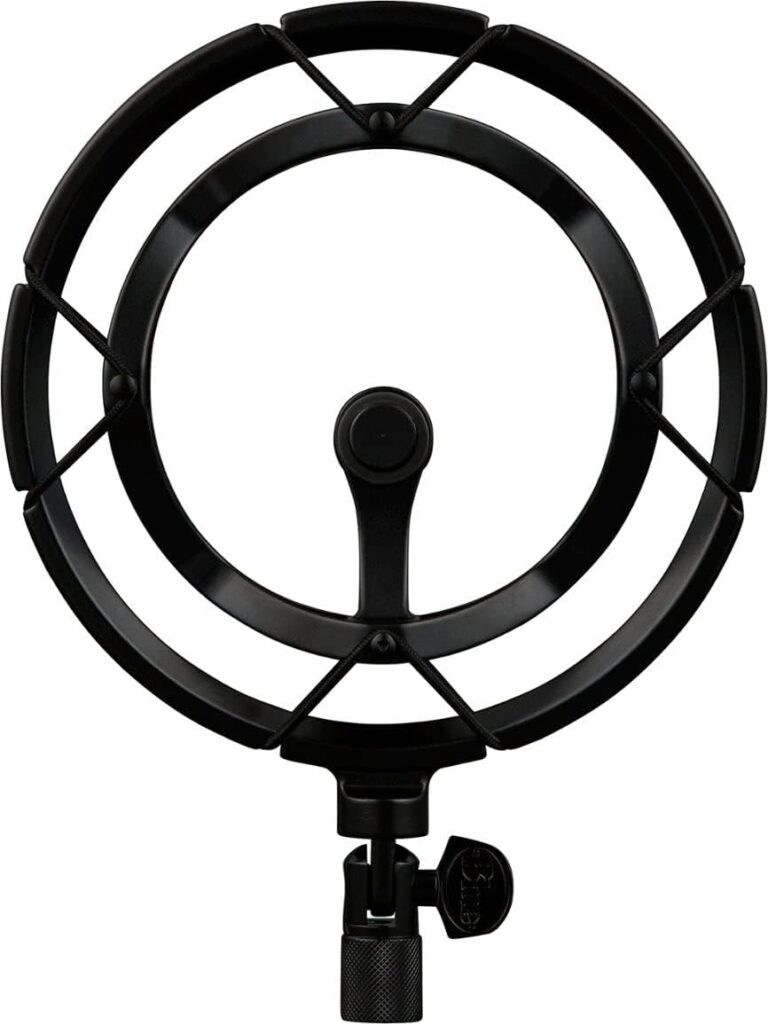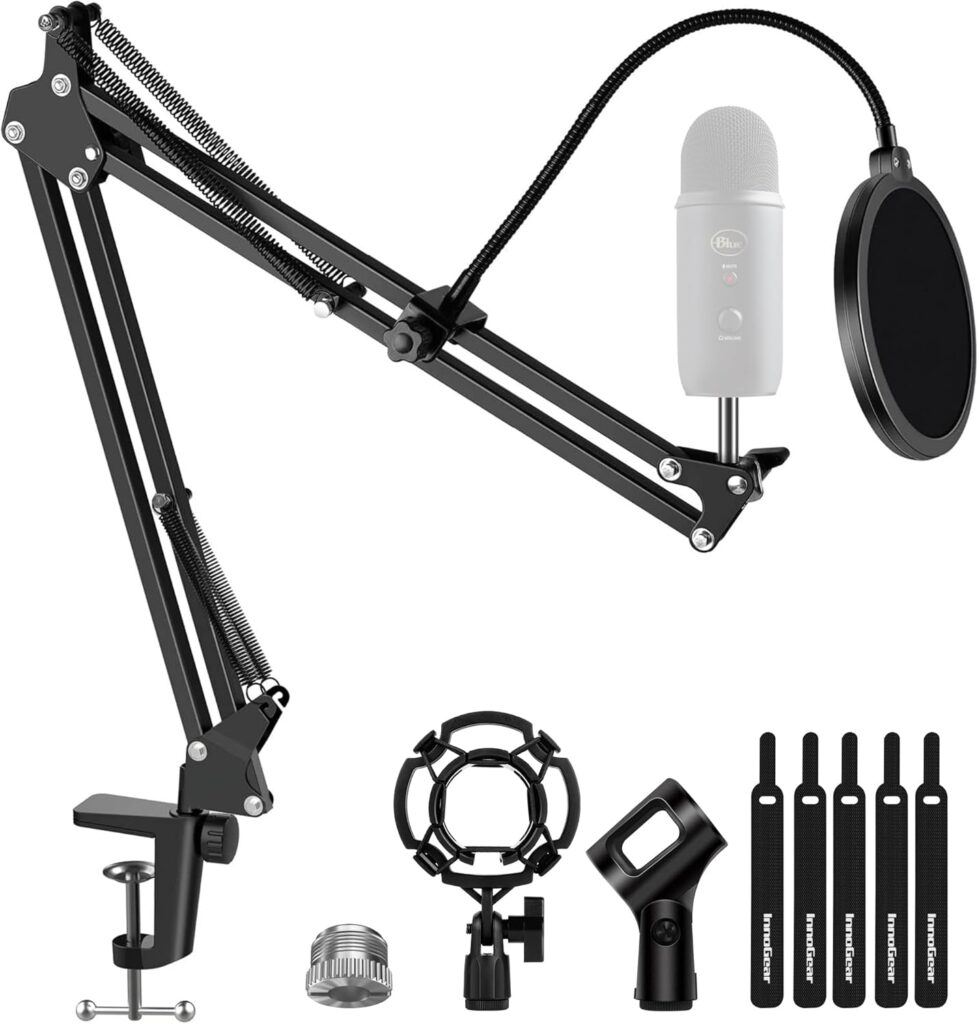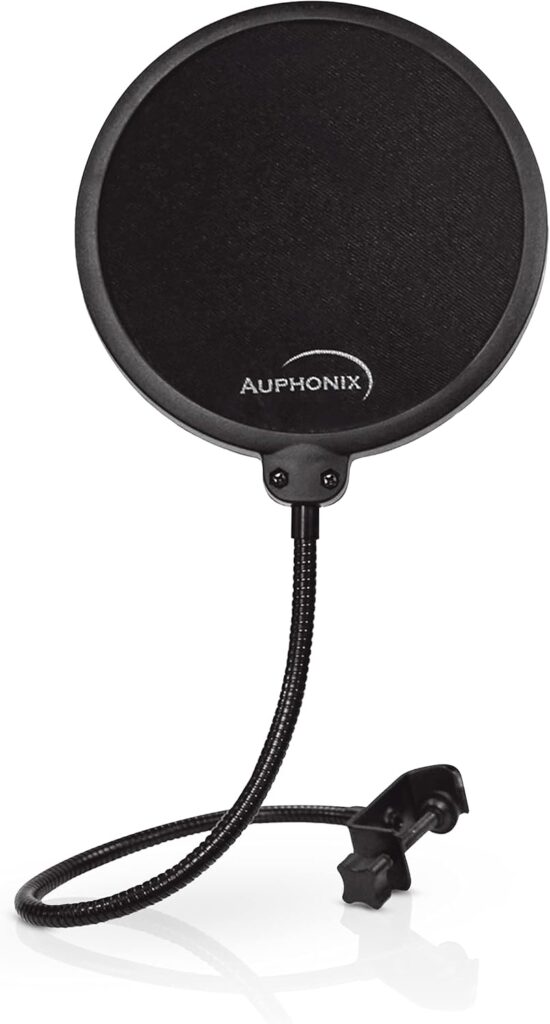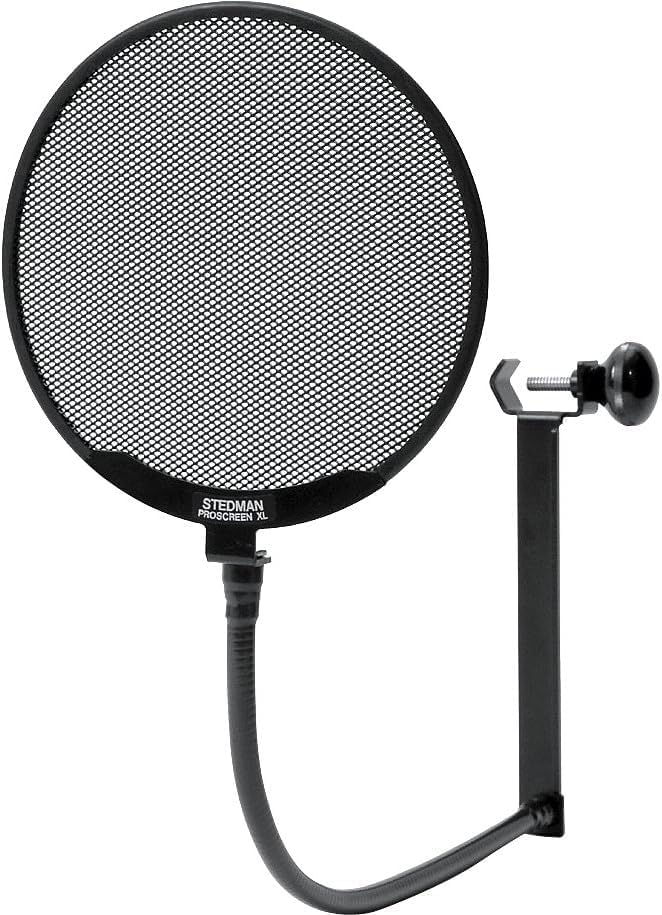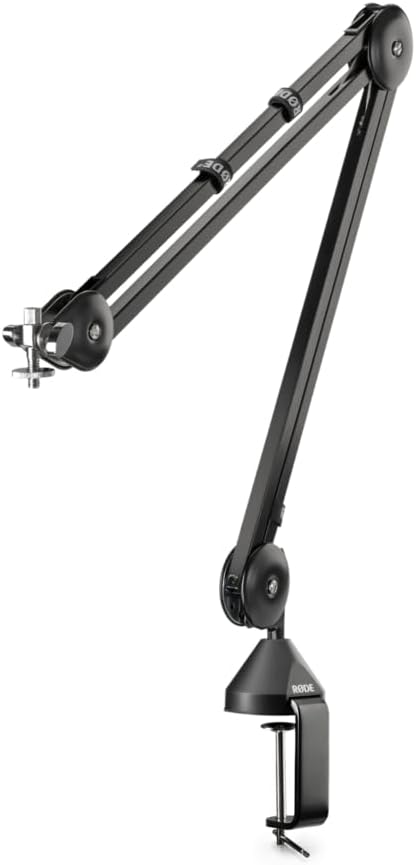Best Blue Yeti Accessories
The Blue Yeti microphone has solidified its place as a go-to choice for creators thanks to its plug-and-play simplicity, excellent sound quality, and versatile recording patterns (cardioid, omnidirectional, bidirectional, and stereo). Whether you’re recording a podcast, streaming on Twitch, or laying down vocal tracks, the Blue Yeti delivers professional-grade audio without requiring a complex setup. However, to unlock its full potential and tailor it to your specific needs, accessorizing is key.
What is the Best Blue Yeti Accessories?
From shock mounts to pop filters, stands, and more, the right accessories can minimize unwanted noise, improve ergonomics, and ensure your Blue Yeti remains in top condition. Here is my top picks for the best blue yeti accessories to improve the sound quality of the yeti mic.
- Blue Radius III Shock Mount
- InnoGear Shock Mount
- Auphonix 6-inch Pop Filter
- Stedman Proscreen XL
- Rode PSA1
- Neewer NB-35
- Vocalbeat Blue Yeti Foam Windscreen
- Sunmon Deadcat Windscreen
- Focusrite Scarlett Solo (3rd Gen)
- Gator Frameworks Desk Mat
I will start with my favourite blue yeti accessories to improve the sound quality of the yeti mic in 2025.
1. Shock Mounts
One of the first accessories any Blue Yeti owner should consider is a shock mount. The Blue Yeti’s built-in stand is convenient, but it’s prone to picking up desk vibrations—think typing, tapping, or even a bumped table. A shock mount suspends the microphone in an elastic cradle, isolating it from these disturbances.
Blue Radius III Shock Mount
The Blue Radius III is purpose-built for the Blue Yeti (and Yeti Pro), making it a seamless fit. Its sleek, vintage-inspired design complements the Yeti’s aesthetic, while the lightweight aluminum frame and elastic suspension effectively dampen vibrations. Users praise its ease of installation—just unscrew the Yeti from its stock base and attach it to the Radius III. Priced around $50-$60, it’s a worthwhile upgrade for anyone serious about clean audio.
InnoGear Shock Mount
For those on a tighter budget, the InnoGear Shock Mount (typically under $20) is a fantastic option. It’s universally compatible with the Blue Yeti and includes an adjustable hinge for precise positioning. While it lacks the premium build of the Radius III, it gets the job done for casual streamers or podcasters.
Why You Need It: A shock mount ensures your recordings stay free of low-frequency rumbles, making it essential for professional-sounding output.
2. Pop Filters
If you’ve ever recorded a “P” or “B” sound that comes out as a harsh burst of air, you’ve encountered plosives. A pop filter diffuses these air blasts before they hit the microphone, resulting in smoother, more polished audio.
Auphonix 6-inch Pop Filter
The Auphonix 6-inch dual-layer pop filter is a favorite among Yeti users. Its clamp design attaches easily to most mic stands, and the flexible gooseneck lets you position it perfectly. At around $25, it’s affordable, durable, and highly effective at reducing plosives without muffling your voice.
Stedman Proscreen XL
For those willing to splurge, the Stedman Proscreen XL (around $70) offers superior plosive protection with its metal mesh design. It’s larger than most pop filters, providing broader coverage—ideal for dynamic speakers or singers using the Yeti’s cardioid pattern.
Why You Need It: Pop filters are non-negotiable for vocal recording, especially if you’re close-miking with the Yeti’s sensitive condenser capsule.
3. Microphone Stands and Boom Arms
The Blue Yeti’s stock stand is fine for basic use, but it limits positioning options. A dedicated stand or boom arm gives you more control over mic placement, reduces desk clutter, and improves ergonomics.
Rode PSA1 Swivel Mount Studio Microphone Boom Arm
The Rode PSA1 is the gold standard for boom arms, and it pairs beautifully with the Blue Yeti. With a 360-degree rotation, 33-inch reach, and sturdy spring-loaded design, it’s perfect for podcasters and streamers who need to swing the mic in and out of frame. It supports the Yeti’s weight (about 3.5 lbs with the shock mount) effortlessly and costs around $100.
Neewer NB-35 Microphone Suspension Boom Arm
For under $30, the Neewer NB-35 offers solid performance with a 360-degree adjustable arm and a clamp that fits most desks. It’s not as robust as the PSA1, but it’s a great entry-level option for casual users.
Why You Need It: A stand or boom arm frees up desk space and lets you position the Yeti at the optimal distance and angle for your voice.
4. Windscreens and Foam Covers
While the Blue Yeti is primarily a studio mic, a windscreen or foam cover can enhance its versatility by reducing wind noise and softening background sounds.
Vocalbeat Blue Yeti Foam Windscreen
The Vocalbeat Foam Windscreen is custom-made for the Blue Yeti, slipping snugly over its capsule. Priced at $10-$15, it’s an affordable way to cut down on breath noise and light environmental sounds, making it ideal for home studios with less-than-perfect acoustics.
Sunmon Deadcat Windscreen
For outdoor recording or high-wind environments, the Sunmon Deadcat Windscreen (around $20) adds a furry layer that significantly reduces wind interference. It’s a bit bulkier but perfect for creators taking their Yeti on the go.
Why You Need It: These accessories improve audio clarity in less controlled settings, extending the Yeti’s usability beyond the desk.
5. USB Hubs and Cables
The Blue Yeti is USB-powered, which is convenient but can strain your computer’s ports if you’re juggling multiple devices. A USB hub or high-quality cable upgrade can streamline your setup.
Anker 4-Port USB 3.0 Hub
The Anker 4-Port USB 3.0 Hub ($20-$25) provides extra ports for your Yeti, external drives, and other peripherals. Its compact design and fast data transfer rates ensure your mic maintains a stable connection without latency.
Cable Matters USB 3.0 Cable
If your stock USB cable feels flimsy or too short, the Cable Matters USB 3.0 Cable (around $10 for 6 feet) is a durable replacement. It supports the Yeti’s power and data needs while offering more placement flexibility.
Why You Need It: Reliable connectivity is critical for uninterrupted recording or streaming sessions.
6. Carrying Cases and Covers
If you travel with your Blue Yeti or want to keep it safe from dust and scratches, a carrying case or cover is a smart investment.
Hermitshell Hard Travel Case
The Hermitshell Hard Travel Case (around $25) is custom-designed for the Blue Yeti, with a molded interior that protects the mic and its cable. It’s lightweight, water-resistant, and compact enough for a backpack.
Aproca Hard Storage Case
At under $20, the Aproca Hard Storage Case offers similar protection with a semi-hard EVA shell and soft lining. It’s a no-frills option for occasional travelers.
Why You Need It: A case safeguards your Yeti from damage, ensuring it stays in pristine condition wherever you go.
7. External Audio Interfaces (Optional)
While the Blue Yeti is a USB mic that doesn’t require an audio interface, advanced users might want one to pair it with XLR mics or add effects.
Focusrite Scarlett Solo (3rd Gen)
The Focusrite Scarlett Solo ($120) is a compact interface that can integrate with your Yeti via USB while offering inputs for additional mics or instruments. It’s overkill for most Yeti users but ideal for hybrid setups.
Why You Need It: Only consider this if you’re scaling up to a multi-mic or professional studio environment.
8. Desk Mats and Acoustic Panels
Your recording environment impacts sound quality as much as your gear. Desk mats and acoustic panels can reduce reflections and background noise.
Gator Frameworks Desk Mat
The Gator Frameworks Desk Mat ($30) dampens desk vibrations and provides a soft surface for your Yeti or stand. It’s practical and doubles as a mouse pad.
Auralex Studiofoam Wedges
For serious soundproofing, Auralex Studiofoam Wedges (around $50 for a small pack) absorb echo and improve room acoustics. They’re not Yeti-specific but elevate any recording setup.
Why You Need It: A controlled environment complements the Yeti’s clarity, reducing post-production cleanup.
How to Choose the Right Accessories for Your Blue Yeti
With so many options, prioritize based on your needs:
- Podcasters: Focus on a shock mount, pop filter, and boom arm for clean, hands-free recording.
- Streamers: Add a sturdy stand and foam windscreen to handle dynamic commentary.
- Musicians: Consider a premium pop filter and acoustic panels for vocal or instrument tracking.
- Travelers: Invest in a hard case and portable windscreen.
Budget also matters—start with essentials like a shock mount and pop filter (under $50 combined) and scale up as your setup evolves.
The Bottom Line
The Blue Yeti is a fantastic microphone out of the box, but the right accessories can transform it into a powerhouse tailored to your creative pursuits. From the Blue Radius III Shock Mount to the Rode PSA1 Boom Arm, these tools enhance audio quality, usability, and durability. Whether you’re a beginner or a seasoned pro, investing in these accessories ensures your Blue Yeti performs at its best in 2025 and beyond.
Pair your mic with the right gear, experiment with your setup, and watch your audio projects soar. What’s your must-have Blue Yeti accessory? Let me know—I’d love to hear how you’re making the most of this iconic mic!

